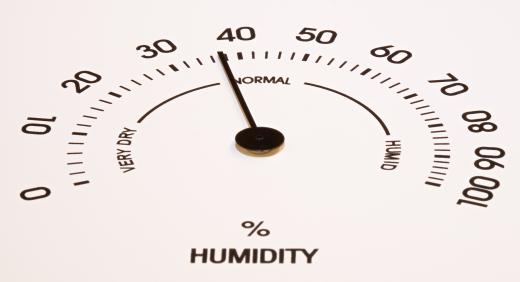What Is a Humidity Table?
A humidity table is a type of chart that compiles data relating temperature to humidity. A humidity chart can take more than one form and may contain different types of data. One type references air temperature and wet bulb temperature to give relative humidity. Another type of humidity table indexes relative humidity and temperature to give the absolute humidity and dew point.
The first type of humidity table compares the air temperature, or dry bulb temperature, and the wet bulb temperature. The latter is found by taking the air temperature with a thermometer that has its bulb moistened, usually by wrapping it in a thin layer of damp cloth. This temperature reflects the humidity in the air. The effect is similar to what happens when a human sweats, making the air feel cooler. The wet bulb temperature is always lower, unless relative humidity is at maximum, or 100%.

Some charts use the air temperature and the wet bulb temperature, which are cross referenced to find the relative humidity. Some other versions of this chart use what is called wet bulb depression, which is the difference between the actual air temperature and the wet bulb temperature. The two types of chart differ in that they use two ways of expressing the same value.
The second kind of humidity table uses the data from the first chart. The air temperature is cross referenced with the relative humidity, and the chart gives the absolute humidity and dew point. The absolute humidity is given as the actual amount of water vapor in the air, expressed as grams of water per cubic meter (g/m3). The dew point is the temperature at which dew will begin to form at the given relative humidity.
Charts of this type can vary in the units used and in layout, but they all are used the same way. Charts for either Fahrenheit and Celsius temperatures may be used, depending on the part of the world in which the readings are being taken. Some charts may combine both measurement systems. Most humidity table charts are assumed to be calibrated for standard atmospheric pressure at sea level. In some cases, more detailed charts are used for higher elevations or that take into account changes in atmospheric pressure.
AS FEATURED ON:
AS FEATURED ON:











Discuss this Article
Post your comments